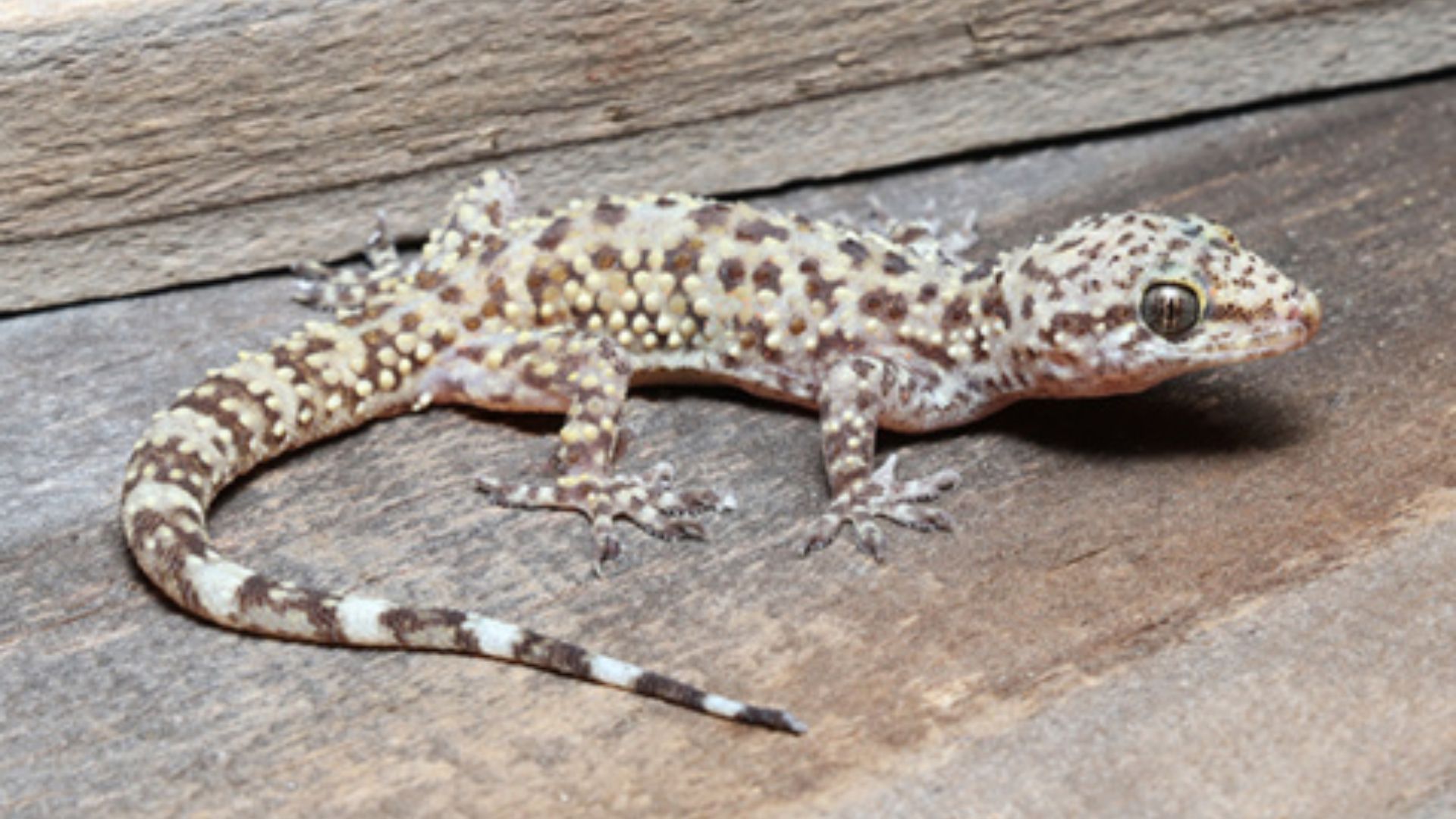Indianapolis, Indiana – The Indiana Department of Natural Resources (DNR) is calling on residents to help monitor the presence of Mediterranean geckos, an exotic lizard species that has been spotted in several areas of the state. While these small reptiles are harmless, wildlife experts are eager to better understand where they are appearing and how they are adapting to Indiana’s environment.
Native to the Mediterranean regions of Europe and northern Africa, the Mediterranean gecko (Hemidactylus turcicus) is known for its distinctive warty skin, tan or pinkish color, and large, bulging eyes with vertical pupils. Measuring about four to five inches long, the lizard has a banded tail and blotched body patterns that help it blend into its surroundings. These nocturnal creatures are most often seen around outdoor lights on warm nights, feeding on insects that gather there. They may also occasionally be found inside buildings, especially during cooler months.
The DNR’s herpetology team has received several photo-supported sightings of Mediterranean geckos in recent years. Most of these reports involve individuals that likely arrived unintentionally, traveling as hidden passengers in shipments from other regions. Because the species is strongly associated with human structures, experts say it’s not unusual to find them clinging to walls or hiding in cracks near light fixtures and windows.
To assist in monitoring their spread, the DNR encourages anyone who encounters a Mediterranean gecko to document the sighting. “Please email sightings, especially those backed by photographs, to [email protected], including the photograph(s). This will help the DNR track locations of this introduced species.” Photos are especially valuable because they allow biologists to confirm identifications and build a clearer picture of where these geckos are living in Indiana.
Despite their growing presence, officials emphasize that Mediterranean geckos pose no danger to humans, pets, or native wildlife. The species has been introduced to many parts of the United States and is now considered the most widespread exotic lizard in the country. However, their survival in Indiana is limited by the state’s cold winters. Without the warmth of a heated building, these geckos cannot persist outdoors year-round. As a result, they are not seen as a threat to Indiana’s native ecosystems.
The DNR hopes that by collecting more data, it can learn how this small, hardy reptile continues to find a foothold in unexpected places. The department encourages anyone interested in learning more about the Mediterranean gecko to visit wildlife.IN.gov/wildlife-resources/animals/mediterranean-gecko/ for photos, identification tips, and additional background on the species.
Through the combined effort of residents and researchers, Indiana can continue tracking these curious visitors — ensuring that even small, harmless newcomers like the Mediterranean gecko are understood and documented as part of the state’s rich and changing wildlife landscape.









